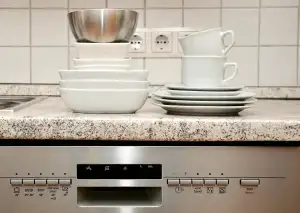Revive Your Rusty Cast Iron Skillet: A Step-by-Step Guide to Restoring its Shine at Home

A rusty cast iron skillet can be a real eyesore in your kitchen. But don't worry, with a little bit of effort and the right techniques, you can easily restore its shine and bring it back to life. Cleaning a rusty cast iron skillet is not as daunting as it may seem. In fact, it can be a satisfying and rewarding process that will leave you with a beautifully restored piece of cookware. So, roll up your sleeves and let's dive into the step-by-step guide to reviving your rusty cast iron skillet at home.
Gather the necessary supplies for cleaning
To restore the shine of your rusty cast iron skillet, you will need a few essential supplies. Firstly, gather a stiff brush or scrubber to remove any loose rust and debris. Next, grab some coarse salt or baking soda, which will act as an abrasive to help lift off the rust. You will also need white vinegar or lemon juice to create an acidic solution that will aid in rust removal. Lastly, make sure to have some paper towels or clean cloth for drying the skillet, as well as a high-smoke point oil like vegetable oil or flaxseed oil for seasoning the skillet after cleaning. With these supplies on hand, you'll be ready to tackle the restoration process with ease.
Preparing the cast iron skillet for cleaning
Before you begin the process of cleaning your rusty cast iron skillet, it's important to properly prepare it. Start by removing any loose rust or debris from the surface of the skillet. You can use a stiff brush or steel wool for this step. Next, rinse the skillet with warm water to remove any remaining dirt or particles. Make sure to avoid using soap at this stage, as it can strip away the skillet's seasoning. Once rinsed, dry the skillet thoroughly with a clean towel to prevent any further rusting. Now that your cast iron skillet is prepped and ready, you're one step closer to restoring its shine!
Removing rust from the cast iron skillet
To remove rust from your cast iron skillet, start by scrubbing the surface with a stiff brush or steel wool. Focus on the rusty areas, applying gentle pressure to loosen the rust. If the rust is stubborn, create a paste by mixing equal parts baking soda and water. Apply the paste to the affected areas and let it sit for a few minutes before scrubbing again. For tougher rust spots, you can also use white vinegar. Soak a cloth in vinegar and place it on top of the rusted area. Leave it for a few hours or overnight, then scrub away the rust. Rinse the skillet thoroughly to remove any residue before moving on to the next step of cleaning.
Scrubbing and cleaning the skillet
After removing the rust from your cast iron skillet, it's time to give it a thorough scrubbing and cleaning. Start by rinsing the skillet with warm water to remove any loose debris. Then, using a stiff brush or sponge, scrub the entire surface of the skillet, including the handle and sides. Make sure to pay extra attention to any stubborn spots or residue.
Avoid using soap or harsh chemicals as they can strip away the skillet's seasoning. Instead, rely on elbow grease and hot water to get the job done. If needed, you can also use a small amount of coarse salt as a gentle abrasive.
Once you've scrubbed away all traces of rust and grime, rinse the skillet thoroughly with warm water. Ensure that no soap residue remains as it can affect the taste of your food.
After rinsing, dry the skillet completely using a clean towel or paper towels. It's crucial to remove all moisture from the surface to prevent future rust formation.
Remember that cast iron skillets are not dishwasher safe, so always hand wash them. Additionally, avoid soaking them in water for extended periods as this can lead to rust formation.
By following these steps and giving your cast iron skillet some TLC, you'll be able to restore its shine and ensure its longevity in your kitchen.
Drying and seasoning the skillet
After cleaning your cast iron skillet, it is crucial to dry it thoroughly to prevent any moisture from causing rust. Use a clean cloth or paper towels to wipe away any remaining water. Next, place the skillet on a stovetop burner set to low heat for a few minutes. This will help evaporate any lingering moisture. Once the skillet is completely dry, it's time to season it. Seasoning creates a protective layer on the skillet's surface and enhances its non-stick properties. Apply a thin layer of vegetable oil or melted shortening all over the skillet, including the handle and exterior. Use a paper towel to evenly distribute the oil and remove any excess. Preheat your oven to 350°F (175°C) and place the skillet upside down on the middle rack. Put aluminum foil or a baking sheet on the bottom rack to catch any drips. Bake for one hour, then turn off the oven and let the skillet cool inside before removing it. Your cast iron skillet is now ready for use! Remember to repeat this seasoning process regularly to maintain its shine and prevent rust from reappearing.
Storing the cast iron skillet properly
Storing the cast iron skillet properly is crucial to prevent it from rusting again. After cleaning and seasoning, make sure the skillet is completely dry. Avoid stacking other cookware on top of it, as this can cause scratches. To protect against moisture, place a paper towel or cloth inside the skillet before storing. Store in a cool, dry place with good air circulation. If you need to stack skillets, place a paper towel between each one. With proper storage, your cast iron skillet will remain rust-free and ready for your next culinary adventure!
In conclusion, restoring a rusty cast iron skillet can bring it back to life and ensure its longevity in your kitchen. By following the steps outlined in this guide, you can revive your skillet and maintain a rust-free surface. Here are some final tips to help you keep your skillet in top shape:
1. After each use, clean your skillet with hot water and a gentle brush or sponge. Avoid using soap, as it can strip away the seasoning.
2. Dry the skillet thoroughly after washing to prevent any moisture from causing rust.
3. Apply a thin layer of oil or fat to the surface of the skillet after each use. This will help maintain its seasoning and protect against rust.
4. Store your cast iron skillet in a dry place with good air circulation. Avoid stacking other heavy objects on top of it, as this can cause damage.
By following these tips and regularly maintaining your cast iron skillet, you can enjoy its cooking benefits for years to come. Happy cooking!
Published: 11. 12. 2023
Category: Home



